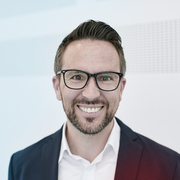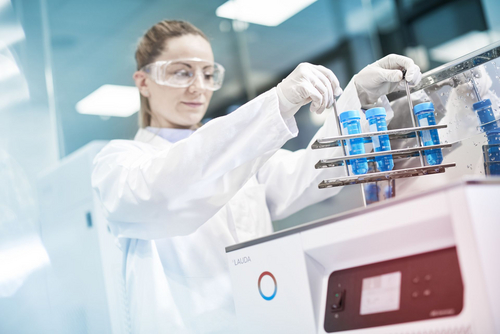
Alle Hydro Gerätetypen sind mittels Wassermangelsicherung sowie der optionalen Wasserniveauregelung vor Überhitzung bei Trockenlauf geschützt und garantieren damit einen zuverlässigen Dauerbetrieb. (Quelle: LAUDA)
New LAUDA Hydro water and shaking water baths up to 100 °C – high quality, intuitive, reliable
2020 – LAUDA, the world market leader for constant temperature equipment and systems for precise temperature generation, has extended its laboratory technology product range. The launch of the new LAUDA Hydro waterbath product line, reinforced by the addition of "GFL Technology", means that LAUDA can now offer a considerably extended range of products. In this respect, LAUDA is continuing the tradition of the GFL brand, which has been valued in laboratories for its durability and superior quality for over 50 years. The GFL company has been part of the LAUDA Group since the beginning of 2019 and will be further expanded as a development and production location.
LAUDA Hydro water baths: Equipped for every laboratory application
Water baths are an indispensable part of many process chains in laboratories. The Hydro product range offers the perfect equipment for every laboratory requirement with six water baths, two water baths with a circulating function and three shaking water baths. The LAUDA Hydro water baths with an interior made of high-quality stainless steel provide the right bath depth and openings for every application with bath volumes from 4 to 41 liters. They are designed for the needs of biological, medical or biochemical laboratories with excellent temperature homogeneity, optional circulation or a shaking function.
Homogeneous temperature distribution
The heater of the LAUDA Hydro water baths is located directly under the bottom of the screen. This ensures homogeneous temperature distribution and rapid achievement of the desired temperature with a high temperature stability of ±0.1 K. The heater power is adjusted to the size of the bath. The optional circulating function is ideal for applications which require both temporal and spatial temperature distribution throughout the bath. Water baths with a circulating system have an excellent temperature homogeneity of ±0.02 K.
All water baths offer a temperature range of up to 100°C, which also permits applications in the boiling temperature range. A timer function can be used to set a switch-on delay and the duration of the operating time, either after a switch-on delay or after reaching the set temperature. The high-contrast 3.5-inch TFT display shows all the settings and operating values. The controller also has an electronic function check with a visual and acoustic alarm signal in the event of an error. The double overtemperature protection allows reliable continuous operation, even in the absence of the operator.
LAUDA Hydro water and shaking water baths from 10 to 100 °C – high quality, intuitive, reliable
The shaking water baths of the LAUDA Hydro series can be used for a variety of tasks in the laboratory depending on requirements. The device type H 20 SOW creates a circular motion for the sample whereas the types H 20 S and H 20 SW are designed for a linear, oscillating shaking movement. This is because variable mixing of the samples is required depending on the application. For example, applications in biotechnology are often dependent on an orbital shaking movement.
The built-in speed controller enables a load-independent, infinitely variable shaking movement with a soft start. The two shaking water baths H 20 SW and H 20 SOW are equipped with a cooling coil as standard. The temperature range of the shaking water baths can be extended down to 10 °C by connecting them to the domestic water supply or to commercially available circulation chillers.
LAUDA Hydro: User safety and a long service life
All Hydro device types are protected against overheating during dry running by means of low-level protection. The Hydro shaking water baths have water level control as standard, which guarantees reliable continuous operation. Furthermore, they consist of a corrosion-resistant outer casing made of electrolytically galvanized, powder-coated sheet steel. The interior parts of the casing and the tubular heating element are made of stainless steel. The double-walled, heat-insulated cover with internal curvature reliably prevents condensate from dripping back into the system. The recessed operating elements protect the electronics from dripping water and dirt. This increases the service life and ensures a high level of user safety.
LAUDA has rounded off its new water bath line with vaporization baths and a tissue float bath for special applications such as gentle evaporation from Erlenmeyer flasks and the stretching and drying of sectioned tissue samples. The new LAUDA Hydro water baths are available as of now and will replace the previous line of LAUDA Aqualine water baths by the end of March 2020.
- Bild: LAUDA Hydro Wasserbad (169 KB)
- Bild: LAUDA Hydro Schüttelwasserbad (145 KB)
- Produktbild: LAUDA Hydro Wasserbad (187 KB)
- Produktbild: LAUDA Hydro Schüttelwasserbad (133 KB)
- Pressemitteilung LAUDA Hydro Wasserbad (43 KB)
- Press Release: LAUDA Hydro water baths (38 KB)
- Comunicado de prensa: LAUDA Hydro baños de agua (39 KB)
- Communiqué de presse: LAUDA Hydro bains-marie (39 KB)
- Пресс-релиз: LAUDA Hydro Водяная баня (40 KB)
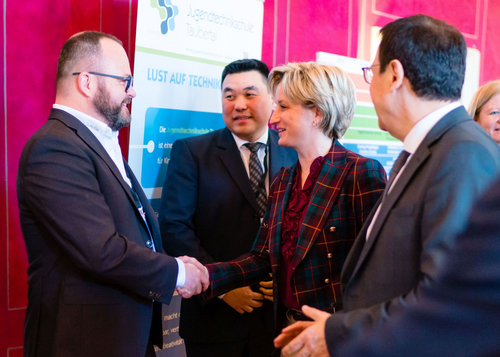
Der Geschäftsführende Gesellschafter von LAUDA, Dr. Gunther Wobser (l.), begrüßt die Wirtschaftsministerin des Landes Baden-Württemberg, Dr. Nicole Hoffmeister-Kraut, gemeinsam mit Campus-Leiter Prof. Dr. Kim (2. v. l.) und dem Vorsitzenden der CDU-Fraktion im Landtag, Prof. Dr. Wolfgang Reinhart (r.). (Quelle: Ludmilla Parsyak Photo-graphy / Fraunhofer IAO)
LAUDA sets impulses at the Popup Labors Baden-Württemberg
With a "Everyday view of digitisation at LAUDA", the President and CEO of LAUDA, Dr. Gunther Wobser, opened the series of lectures at the action day "Digitisation and sustainability for BW and worldwide" with a keynote speech on 10 February. The action day is part of the 6th "Po-pup Laboratory BW", a digitisation project of the state of Baden-Württemberg. The aim of the Po-pup Lab BW is to give small and medium-sized companies in the state an understanding of innovative technologies or business models and to provide concrete recommendations for action on the basis of workshops or best practice examples.
Components of the digital strategy of the world market leader
In his presentation to representatives from politics and business, Dr. Wobser pointed out the great importance of digitization in the industry. The exponentially increasing technical development, e.g. Moore's Law of Computer Performance, stands in contrast to the linear human adaptability. As a result, new companies with disruptive forces are increasingly pushing into the market. LAUDA meets this challenge, among other things, through strategic cooperation with start-ups such as ENER-IQ, Coolar and watttron, according to Dr. Wobser. LAUDA's own LAUDA innovation laboratory in Silicon Valley and the Digital Agenda, which is aligned with the corporate strategy, are further components of LAUDA's digital strategy.
Appeal to politicians
At the end of his keynote speech, Dr. Wobser addressed the political community with forceful words: The Main-Tauber-Kreis is in the final group of districts in terms of innovative ability, ranking 39th out of 44, and the trend is downward. Further active support is required, for example in the expansion of the Baden-Württemberg Cooperative State University Mosbach with the Bad Mergentheim campus as "anchor point of digitalisation". Dr. Wobser criticized that too often, medium-sized companies have to carry out complex digitization projects with their own resources without the support of the state and immediately reduce the results as an investment.
At the LAUDA stand, the Minister of Economic Affairs of the State of Baden-Württemberg, Dr. Nicole Hoffmeister-Kraut, accompanied by Campus Director Prof. Dr. Kim and the Chairman of the CDU faction in the State Parliament, Prof. Dr. Wolfgang Reinhart, were able to gain an impression of two digital projects of LAUDA. The family business thus demonstrated a practical application of virtual reality with the LAUDA showroom. LAUDA also demonstrated the connection of the industrial recirculating chillers to its own LAUDA Cloud including data visualisation via a tablet. This enables users to check the device status at any time, regardless of location, and also to change parameters directly.

Der LAUDA ECO REJ 1225 G Kalibrierthermostat ist ideal zum Kalibrieren von Glasthermometern oder elektrischen Thermometern. (Quelle: LAUDA)
New ECO calibration thermostat fulfills the exacting re-quirements of test laboratories
With the LAUDA ECO REJ 1225 G calibration thermostat, LAUDA has released a piece of constant temperature equipment designed for the specific requirements of test laboratories and customers who perform calibration and adjustment work on a daily basis. The equipment has been specially developed for the precise calibration of thermometers, such as industrial platinum resistance thermometers, temperature probes, thermocouples or electric thermometers. Liquid calibration baths are considered the most stable temperature source and offer the most consistency for the comparative calibration of temperature probes and sensors in a laboratory. They use a large quantity of liquid to maintain a stable and homogeneous test environment for the calibration of calibration objects of varying sizes, shapes and lengths.
These applications call for calibration thermostats that maintain a constant, temperature-independent liquid level. To achieve this, LAUDA uses a two-chamber bath, consisting of the temperature chamber and the application chamber, also known as the overflow vessel, usable space or buffer chamber. A pump unit pumps the medium from the temperature chamber to the application chamber, which has an overflow at a certain level. From here, the bath medium flows back into the temperature chamber. The ECO calibration thermostat also has a height-adjustable, cylindrical working chamber. This makes it possible to adjust the liquid bath surface in the working area to above cover plate height. Fully immersed thermometers can thus be read directly at the immersion point. In addition, the separate working chamber provides a constant immersion depth regardless of the volume expansion of the bath liquid, an excellent temperature stability of ±0.02 K and a homogeneous temperature distribution within a working temperature range of -25 to 200°C.
The new ECO calibration thermostats: Available with natural refrigerants
With the new LAUDA ECO calibration thermostat, LAUDA has made an important commitment to environmentally friendly temperature control technology. For example, the device is operated with refrigerants that comply with the European F-gas regulation. In addition, the new REJ 1225 G temperature calibration thermostat is optionally available with natural refrigerants. The thermostat can easily and flexibly be integrated in existing work processes thanks to a variety of interfaces, including Profibus, Ethernet or Pt100/LiBus. The large, color TFT display provides a clear overview at a glance and lets you program a variety of temperature curves, which are processed automatically by the thermostat to support your everyday laboratory work.
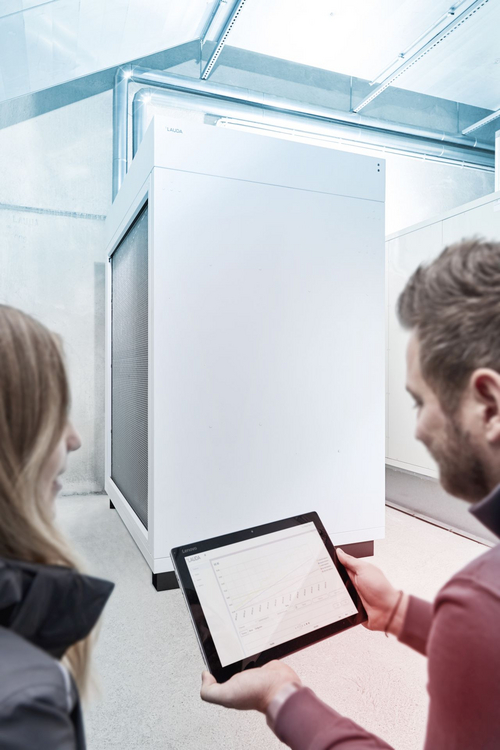
LAUDA Ultracool Umlaufkühler lassen sich per Webserver über PC oder sogar mobile Endgeräte steuern. Die Geräte sind zudem an die LAUDA Cloud angebunden.
LAUDA presents new Ultracool circulation chillers from -10 to 35 °C according to the Ecodesign...
LAUDA, the world market leader in precise temperature control, presents a new generation of ultra-modern circulation chillers of the Ultracool series which have been developed with a focus on energy efficiency and in compliance with the European Ecodesign Directive. LAUDA has also set new standards in the digitalization of temperature control processes as a result of the integrated web server, which permits control via mobile devices, as well as the connection to the LAUDA Cloud. Industrial circulation chillers are often used in continuous operation. They cool applications used e.g. in the printing industry, machine and plant construction and metal working. Companies are increasingly focusing on energy-saving and sustainable measures as part of the energy revolution; the need for energy-efficient options to control the temperature of industrial processes is also constantly increasing.
LAUDA Ultracool circulation chillers with an energy saving of up to 50 percent
The new LAUDA Ultracool circulation chillers have been developed in compliance with the European Ecodesign Directive 2009/125/EC, in order to meet customers' requirements for energy- and resource-saving products. The Directive defines limit values for energy efficiency which process circulation chillers must fulfill. This turns the new Ultracool devices into extremely efficient industrial circulation chillers. The design allows energy costs to be reduced by up to 50 percent depending on the operating conditions compared with conventional chillers which are not Ecodesign-compliant. This not only reduces operating costs but also provides payback times of less than one year.
LAUDA Ultracool: Prepared for Industry 4.0
The new circulation chillers are equipped with an LCD remote control with a cable connection as standard. An Ethernet interface for connection to a computer or local network (LAN) is also integrated as standard. In addition, the intelligent connectivity concept of the new Ultracool circulation chillers provides flexible operating options. For example, the Ultracool devices can be controlled by means of a web server via a PC or even mobile devices - an Internet connection is not necessary. The new LAUDA Ultracool circulation chillers are also among the first devices from the world market leader in temperature control technology to be connected to the LAUDA Cloud. This enables data exchange and monitoring from any computer with an Internet connection – irrespective of the location. LAUDA will systematically expand its Cloud offer from 2020 onwards and offer services such as predictive maintenance to avoid downtimes.
Ready for any customer requirement
LAUDA Ultracool circulation chillers cool precisely in an extended operating temperature range from -10 to 35 °C with a temperature stability of ±0.5 K. The protection class IP 54 allows outdoor installation, and fan control as standard guarantees operation at ambient temperatures down to -15 °C and reduces noise emission. LAUDA has been able to reduce the footprint in comparison with equivalent previous models. All the new LAUDA Ultracool circulation chillers can be optimized for any customer-specific requirement thanks to numerous options such as speed-controlled pumps or flow meters. The bi-frequency power supply (50/60 Hz) enables worldwide use.
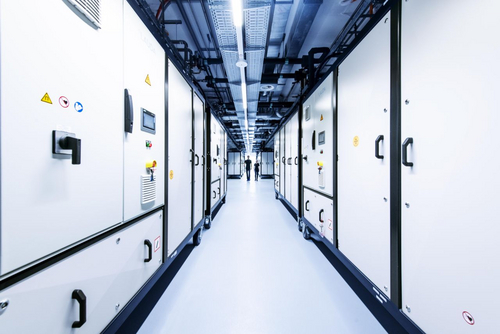
Die LAUDA Temperieranlagen bei Bertrandt in Ehningen. (Quelle: Bertrandt)
LAUDA provides temperature control for test processes for electromobility
The ongoing development and ever greater acceptance of new drives which use electricity or hydrogen poses new challenges for automobile manufacturers. Suppliers and service providers who support established automobile manufacturers with their know-how are a crucial success factor for dealing with electromobility. Bertrandt AG provides its customers with test stands with climatic chambers to test high-voltage batteries from the module level and hybrid batteries to batteries for all-electric vehicles under various climatic and load conditions. The components are exposed to a wide variety of conditions in climate simulations or accelerated aging in fatigue tests. Bertrandt has successfully offered these industry-specific development services for over 40 years and is a globally operating company with around 13,000 employees and 57 locations. This year the company built one of the largest high-voltage battery test centers in Germany in Ehningen. Bertrandt has put its faith in temperature control technology from LAUDA to equip the new test chambers.
High-precision temperature control down to -40 °C
In addition, the company has ordered Process Cooling Units with volume flow control from LAUDA which meet the high demands of customers in the automotive sector. The units are used to control the temperature of test specimens inside a climatic chamber, such as HV storage devices, i.e. high-voltage batteries, which are used in electric cars as well as solar systems. The customer uses two large SUK 400W units for performance tests and ten additional SUK 350W units for endurance tests and simulation runs. The Process Cooling Units precisely control the temperature from -40 to 120 °C.
The special feature: LAUDA develops the refrigeration systems with a water/glycol mixture as the temperature control medium and a single-stage schema cooling circuit. By dispensing with a cascade refrigeration system, LAUDA can guarantee the future-proofing of the design with regard to the European F-Gas Regulation, since a refrigerant with a high GWP value is not required for the second stage. The refrigeration system must have sufficient power reserves, in order to be able to guarantee precise control even at limit temperatures around -40 °C. Each individual Process Cooling Unit must be precisely tailored, since water/glycol mixtures begin to freeze at temperatures around -45 °C (depending on the concentration).
Fully automatic filling facilitates test processes
LAUDA has equipped the Process Cooling Units with fully automatic filling and draining of the test specimen, in order to facilitate the testing processes of the customer in the automotive sector. This technology, which has been in LAUDA's product range for a long time, is now being requested by more and more customers and is becoming the industry standard, explains Manuel Faulhaber, Project Manager at LAUDA Heating and Cooling Systems. Since Bertrandt is a service provider which serves a wide variety of customers, the systems have also been designed with fully automatic filling and draining of the entire system. Bertrandt is therefore able to use a wide range of customer-specific temperature control media for its test procedures without cumbersome manual filling and draining - a massive time saving for the service provider.
